全站搜索
Pesquisar em todo o sítio Web
Pesquisar em todo o sítio Web
Shaking table is also called shaker table, which is the commonly used gravity ore dressing equipment. Its separation efficiency is greater than the general gravity separation equipment.
Shaking table is a kind of gravity beneficiation equipment, which is mainly used for separating gold, silver, lead-zinc, tantalum-zinc, tin and other rare metal and precious metal ores. The role of shaking table is similar to centrifugal gold concentrator, belongs to alluvial gold washing ore dressing equipment, rarely used in alluvial gold ore roughing, mostly used in alluvial gold ore rough concentrate ore dressing and purification. It can extract high purity gold.
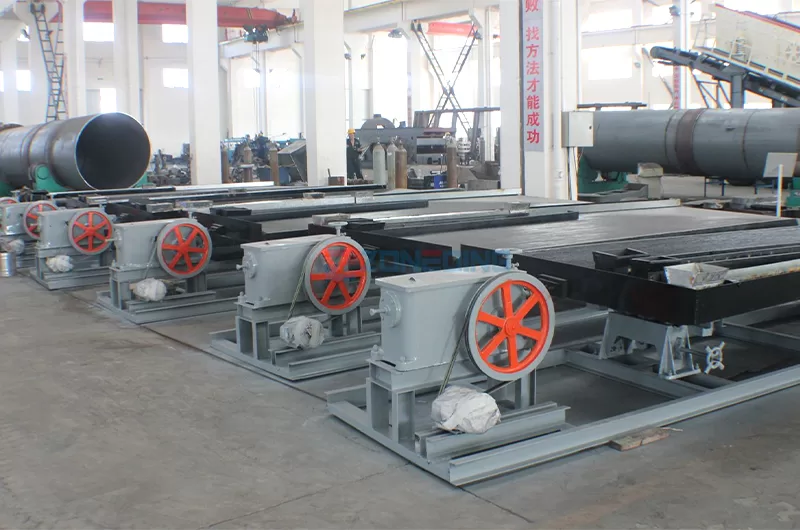
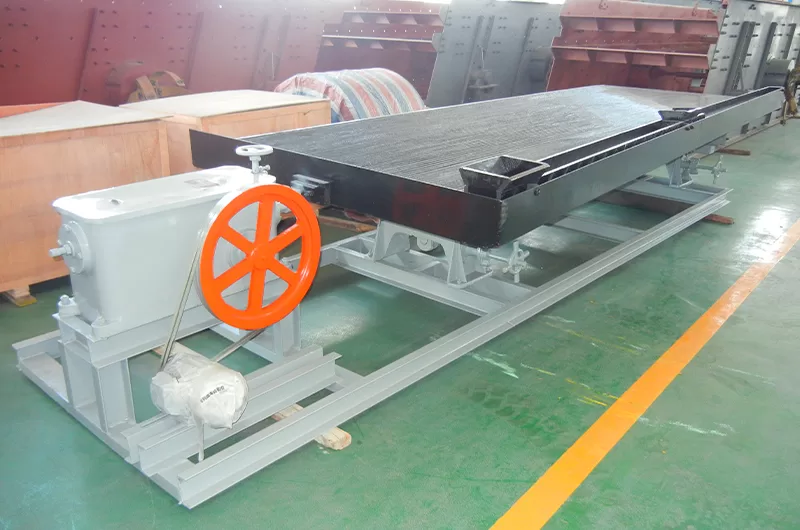
Shaking table gold separation is suitable for processing minerals with finer particle size. According to the particle size of the ore, it can be divided into three types: coarse sand bed, fine sand bed and ore mud bed. Among them, the coarse sand bed is suitable for separating material particle size For ore particles as small as 0.5 mm, the fine sand bed is suitable for processing ore particles with a particle size range of 0.5 to 0.074 mm, and the ore mud bed is suitable for processing ore particles with a particle size of 0.074 to 0.037 mm.

Bed head: contains the electric motor, transmission device, to provide power for the shaking table.
Bed surface: the working area for ore sorting, made of wear-resistant material with bed strips.
Slope adjuster: used to adjust the inclination angle of the bed to optimize the sorting effect.
Water Tank: Provides the water flow required for sorting to help loosen and stratify the ore.
Tanks: hold the ore to be sorted.
Rifling bars: guide the movement of the ore on the bed.
Lubrication System: Ensures smooth operation of shaking table components and reduces wear and tear.
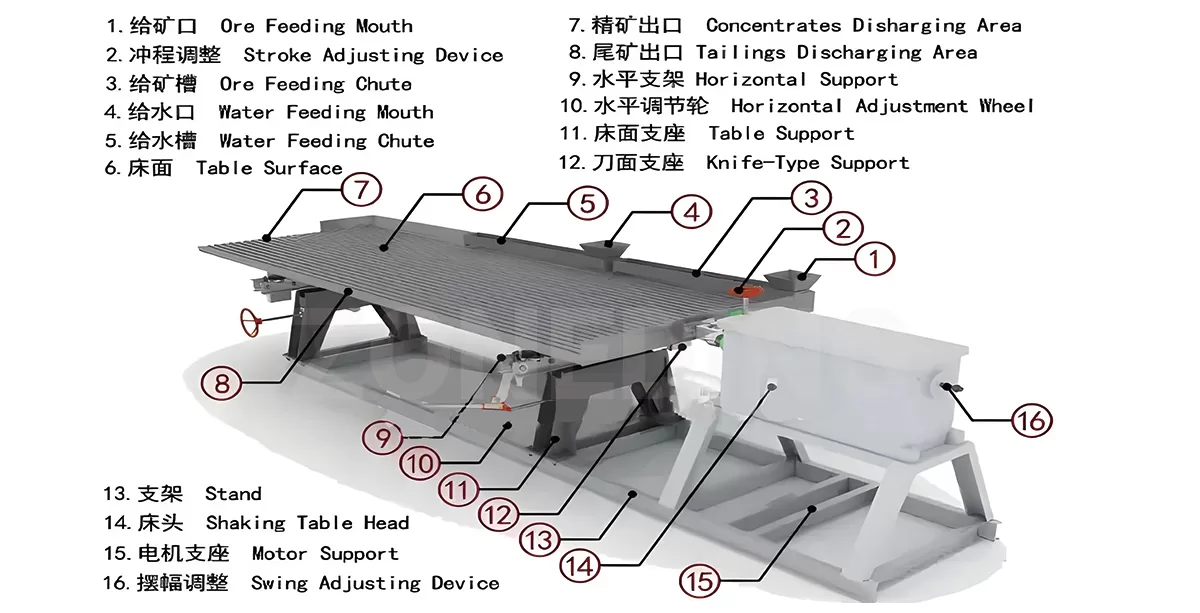
The shaking table of Zhongding machine mainly relies on its unique shaking trajectory and bed design to realize the separation of minerals. When the motor starts, the power is transmitted to the crankshaft of the shaking table through the transmission device such as belt or gear. The crankshaft then rotates, driving the connecting rod and rocker for up and down or back and forth reciprocating motion. This movement makes the bed surface produce certain vibration and tilt, so that the mineral particles in the bed surface for layering and movement.
As mineral particles of different densities have different settling speeds under the combined effect of vibration and water flow, they will be gradually stratified and moved to different positions on the bed in the order of density from low to high. Eventually, by adjusting the tilt angle of the bed and vibration parameters, the mineral particles of different densities can be discharged from the concentrate and tailings ports of the bed, thus realizing the effective separation of mineral.
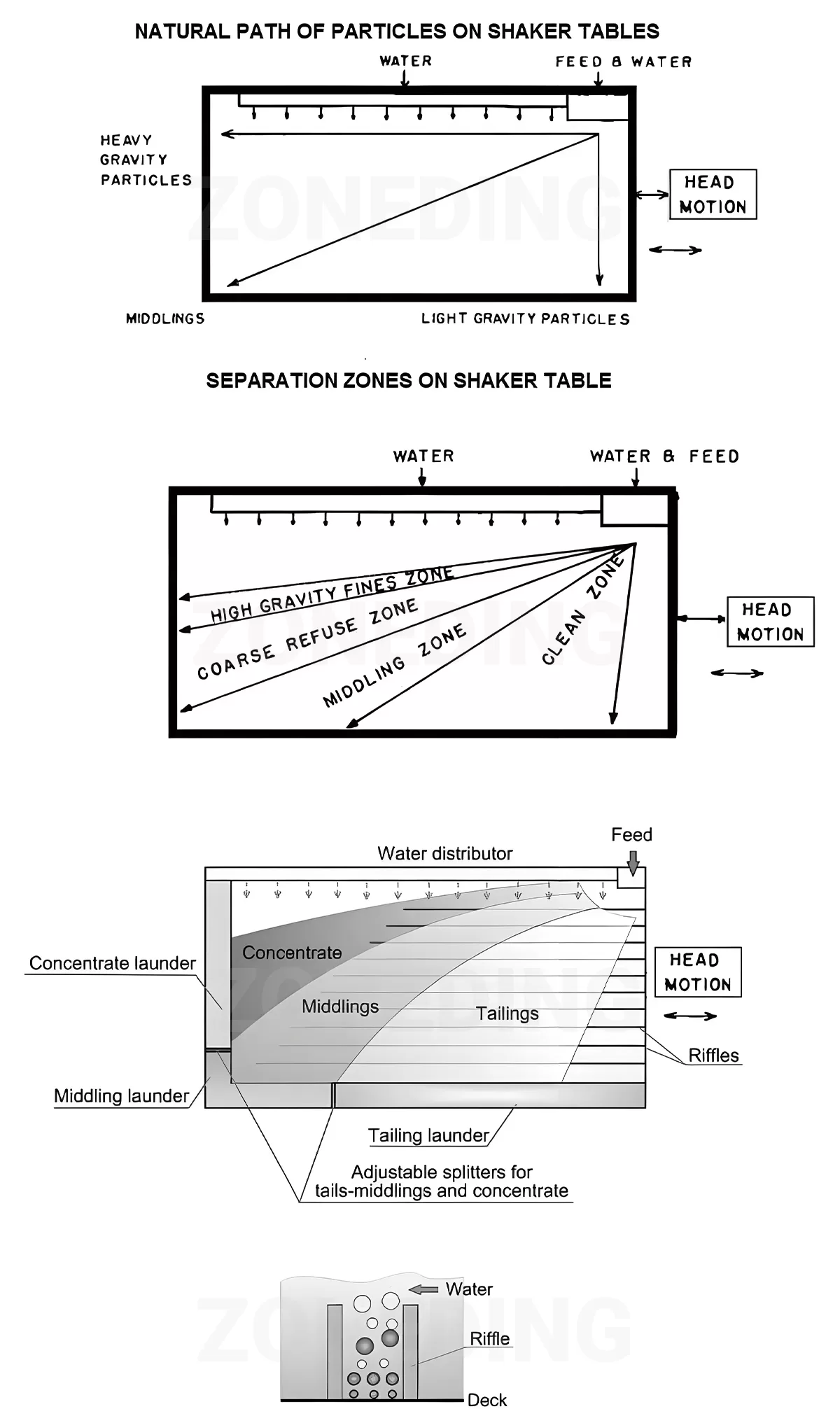
| Name | Grit concentrator table | Fine sand concentrator table | Sludge concentrator table | |
| Bed surface Dimensions | Length(mm) | 4450 | 4450 | 4450 |
| Driving part Width(mm) | 1855 | 1855 | 1855 | |
| Concentrate part Width(mm) | 1546 | 1546 | 1546 | |
| Max.feeding size(mm) | 2 | 0.5 | 0.15 | |
| Feeding amount(t/d) | 30-60 | 10-20 | 15-25 | |
| Feeding thickness(%) | 25-30 | 20-25 | 15-25 | |
| Stroke(mm) | 16-22 | 11-16 | 8-16 | |
| Frequency(f) | 45-48 | 48-53 | 50-57 | |
| Bed surface Water quantity(t/d) | 80-150 | 30-60 | 10-17 | |
| Bed surface Horizontal obliquity(°) | 2.5-4.5 | 1.5-3.5 | 1-2 | |
| Bed surface Portrait obliquity(%) | 1.4 | 0.92 | —- | |
| Table board corner(°) | 32-42 | 40 | 42 | |
| Concentrating area(㎡) | 7.6 | 7.6 | 7.6 | |
| Bed surface Length ratio | 2.6 | 2.6 | 2.6 | |
| Shape of side-bed surface | Rectangle | Zigzag | Triangle | |
| Motor power(kw) | 1.1 | 1.1 | 1.1 | |
| Transmission device | Eccentricity Linkage | |||
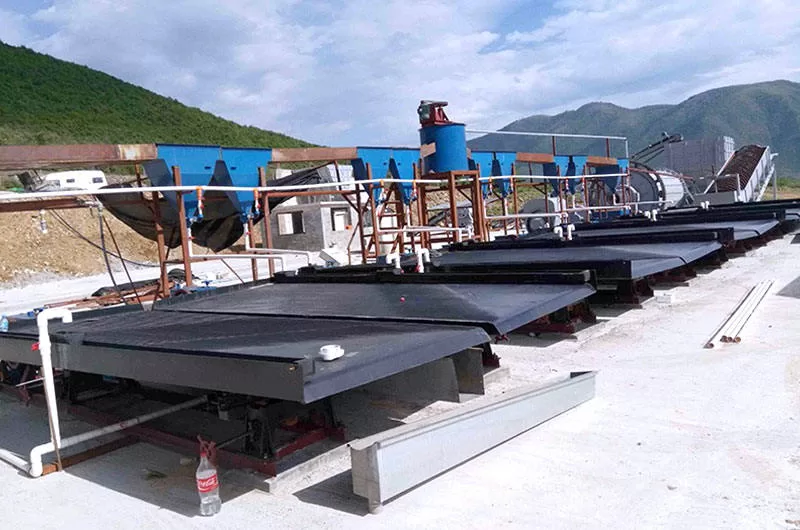
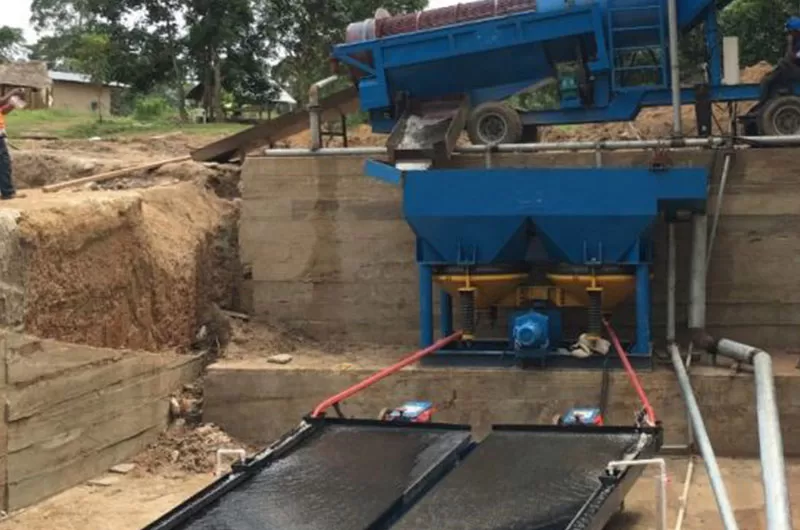
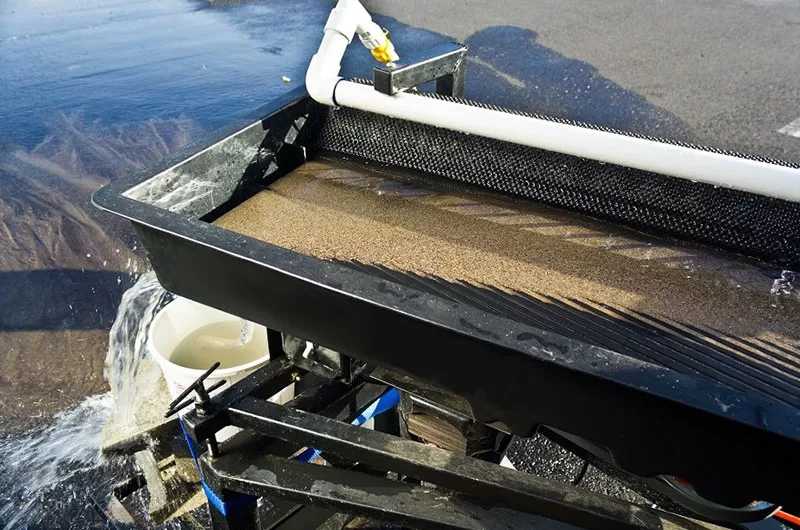
Resposta: Os principais factores que influenciam a separação incluem o movimento da mesa (curso e frequência), o volume e a inclinação da água, a taxa de alimentação e a concentração, bem como o tamanho e a forma das partículas do material de alimentação. O ajuste correto destes factores é fundamental para uma separação eficiente. As inclinações longitudinais e transversais da mesa devem ser controladas com precisão. A concentração de alimentação também deve ser adequada, normalmente 20-30% para minerais grosseiros e 15-25% para minerais finos.
Resposta: A operação envolve a observação da superfície da mesa e o ajuste da inclinação, do fluxo de água e da taxa de alimentação. A manutenção regular inclui a verificação de peças soltas, a lubrificação dos componentes móveis, a inspeção do desgaste e a limpeza da superfície da mesa. A manutenção preventiva deve ser efectuada regularmente, com intervalos que variam entre cada mês e uma vez por ano.
Resposta: Os problemas mais comuns podem incluir a vibração da mesa ou cortes irregulares, distribuição desigual do material ou separação deficiente. A resolução de problemas pode envolver a verificação de parafusos soltos, molas danificadas ou desalinhamento, o ajuste da tensão da correia, a inspeção dos componentes eléctricos e a garantia de uma lubrificação adequada. Se houver um ruído invulgar, identifique a fonte e elimine o problema.
Resposta:
Vantagens: As mesas vibratórias oferecem elevadas taxas de enriquecimento, são relativamente simples de operar e produzem zonas de separação visíveis, permitindo um fácil ajuste e monitorização. São adequadas para uma vasta gama de tamanhos e densidades de partículas.
Desvantagens: Normalmente, têm uma capacidade de produção inferior à de outros métodos, como os jigues ou as espirais. Também requerem uma área relativamente grande e consomem uma quantidade significativa de água.
Resposta: A seleção depende do material a ser processado, do rendimento desejado e da gama de tamanhos de partículas. Os factores a considerar incluem a área da plataforma, o comprimento do curso e o design do riffle. Recomenda-se a consulta de um fabricante ou especialista para determinar a configuração ideal.
